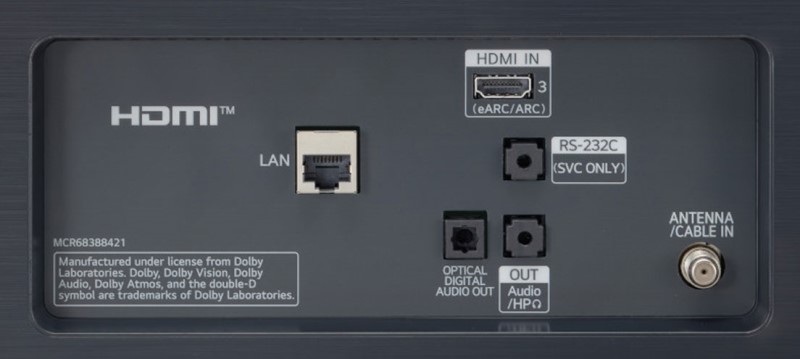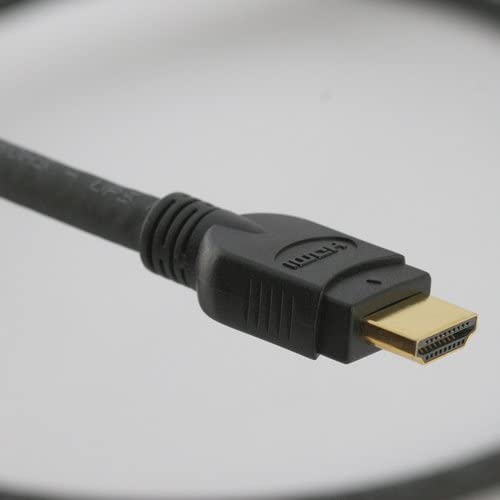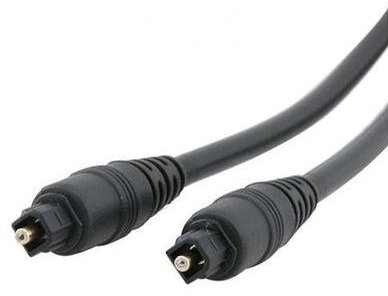How To Get Sound from Your TV’s Apps
Smart TVs seem like a great idea. They are an all-in-one solution for what you need. TV displays the picture, plays the sound, and now they have the apps’ built-in! No more external boxes, no more streaming sticks, no more using your game controller as a remote control. Your TV does it all!
Except it sounds like crap.
It is time to upgrade! It doesn’t matter if you are adding a soundbar or a full surround sound system. You still have to get the sound from the internal apps of your TV to your system. Fortunately, manufacturers have anticipated this and have included some audio outputs on the back of your TV. But which is best? Let’s break it down.

Best: HDMI eARC – Full Lossless Audio
HDMI is the defacto standard in high-end audio. If you want lossless audio, you need HDMI. To get lossless audio from your TV’s apps to your surround sound system, you will need to use an HDMI cable. More importantly, you’ll need an Ultra High-Speed cable connected to an eARC port. eARC stands for Enhanced Audio Return Channnel. How do you know if you have an eARC port? It’ll be labeled near the port.
The key is that HDMI always defaults to the lowest common denominator. That means that the TV and the device you connect it to (soundbar or AV receiver) both need to have eARC ports. If they do, you can get full lossless audio transmission of sound from your TV’s apps.
Now, you might be saying, “Hey, most apps don’t have lossless audio! Do I really need this?”
The answer is, “Yes.” While it is true that the sound codecs used in your TV’s apps are lossy, many still have access to Dolby Atmos. If you want Dolby Atmos, you’ll need eARC.
Author’s Note: Just because HDMI can do a thing, doesn’t mean your TV supports that thing. We’ve already addressed how some TVs don’t support DTS audio out of any connection type. Always check your manual before assuming your TV will support the sound format output by your app.

Second Best: HDMI ARC – Lossy Surround Sound
eARC is fairly new while ARC has been around for a while. Your older HDMI cables will likely work with ARC. ARC can transmit lossy surround sound. This includes Dolby Digital and DTS codecs. While lossy sounds bad in comparison to “lossless,” don’t worry too much. It is the same audio we had on DVDs that we thought was so great.
The real limitation of ARC is the number of channels. ARC is limited to 5.1 surround sound. It doesn’t have the bandwidth to stream Atmos or 7.1 audio (much less lossless). If you are just using your TV’s internal apps, lossy surround sound is just fine as long as you don’t care about Atmos.
One thing to keep in mind about ARC is that its implementation has been spotty. Many of the features that ARC could do were considered “optional.” This means that even though ARC can do full 5.1 audio, it doesn’t mean your TV will support it. Things like automatic lipsync were also optional (it is mandatory on eARC). The older your TV, the more likely these features will not be supported (or not fully supported).
Optical – Basically the Same as ARC but Sometimes Not
ARC was basically designed to take the place of Optical connections (and also the less common these days Coaxial or S/DIFF connections). This means that they should have the same sound. If your TV’s apps are putting out Dolby Digital, it doesn’t matter if it arrives at your receiver via ARC or Optical, it’ll sound the same.
But there is more to it than that.
HDMI has extra functions included. HDMI CEC, while problematic, allows you to control all the devices in the signal chain from a single remote. That isn’t part of the Optical standard. Also not part of the Optical standard? Automatic lipsync. Lipsync may be optional with HDMI ARC, it is definitely not included with Optical. Does this mean you’ll have Lipsync issues? Not necessarily.

But that doesn’t mean that HDMI ARC is always superior? Not necessarily. Like we said with HDMI ARC, sometimes the audio decoding and streaming aren’t handled correctly. With some TVs, some apps will have access to full 5.1 surround sound audio while others will be limited to stereo. With Optical, a connection type that has been around for a long time, you are unlikely to run into these same problems.
But unlikely doesn’t mean impossible. Our suggestion? Always keep an Optical cable around. Just in case.

Worst: RCA – Stereo PCM Only
RCA connections are stereo only. The back of your TV might have a red and white RCA connection, or it may have a 3.5mm port. Either way, all you can get is stereo sound. It will be uncompressed PCM, but it will never be more than stereo. No matter the app or TV, you can always get stereo sound out of it. If all you are looking for is the ability to hear what you are watching on another speaker, this will get you there. If you are using an AV receiver, you can upmix this to as many speakers as you own using one of the included upmixers. Otherwise, stereo is it.
Wrap Up
Most people just want to be able to hear the sound coming from their TV’s included apps. While some connection methods are technically “better,” if you don’t have an Atmos speaker system, you won’t hear a difference between eARC, ARC, and Optical. So, which connection method is best? If you have access to HDMI and you don’t experience any lipsync issues, we’d go that route. If you do have some lipsync issues, try out an Optical connection. When all else fails, you’ve always got stereo.


